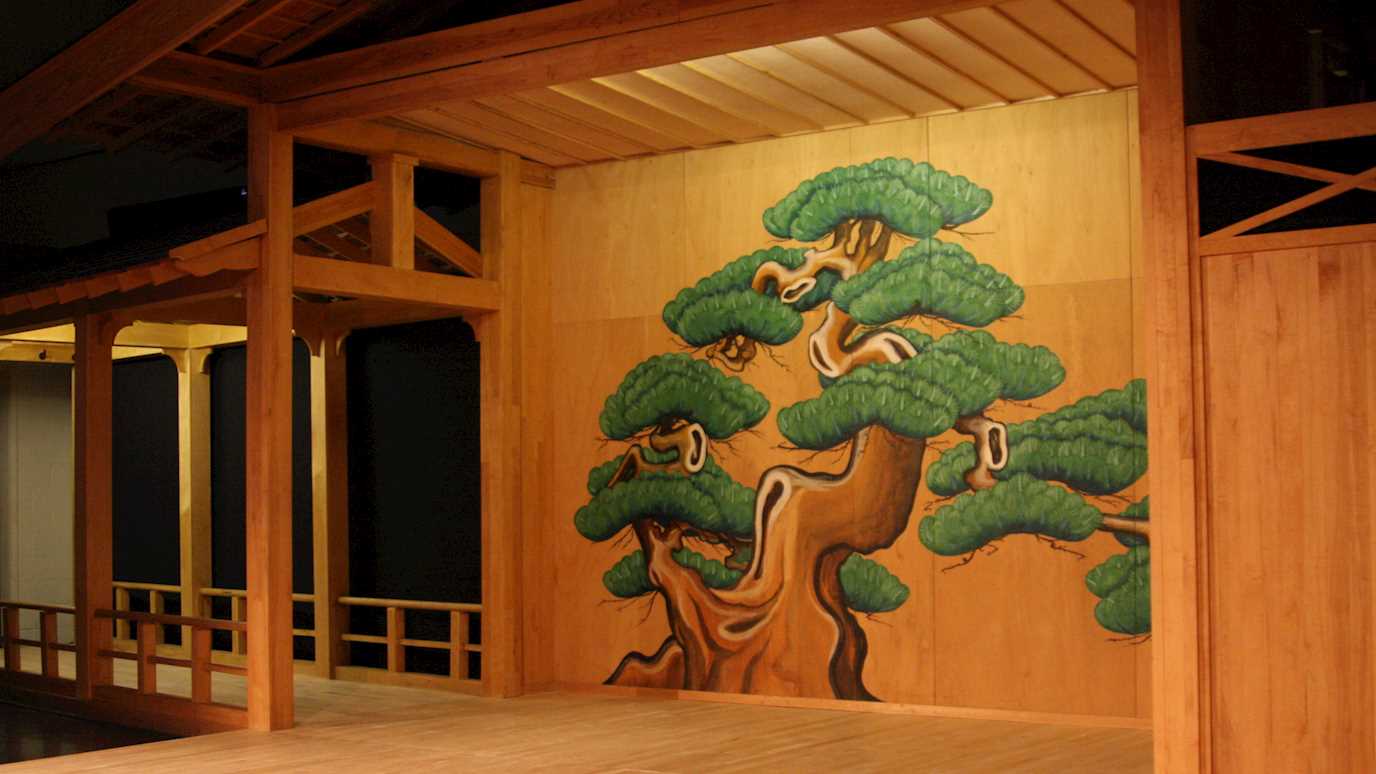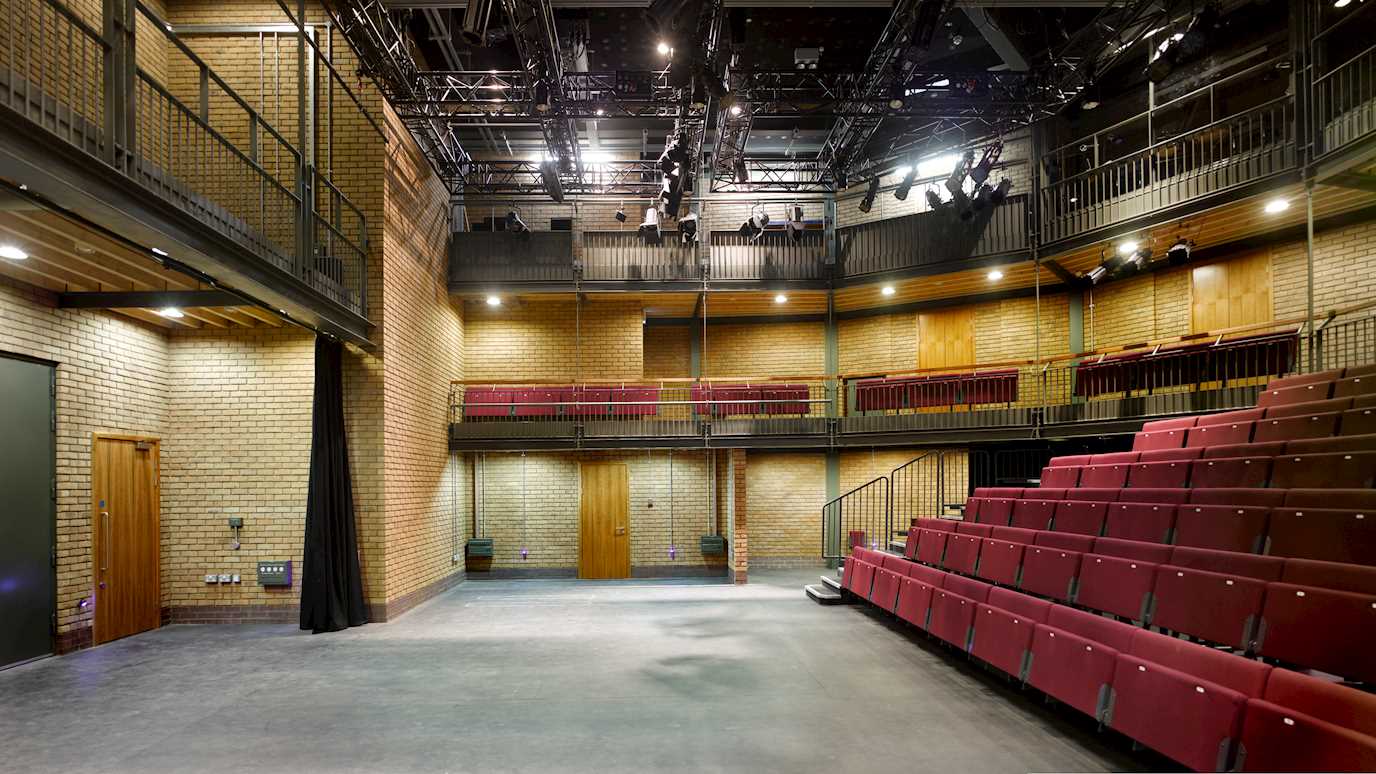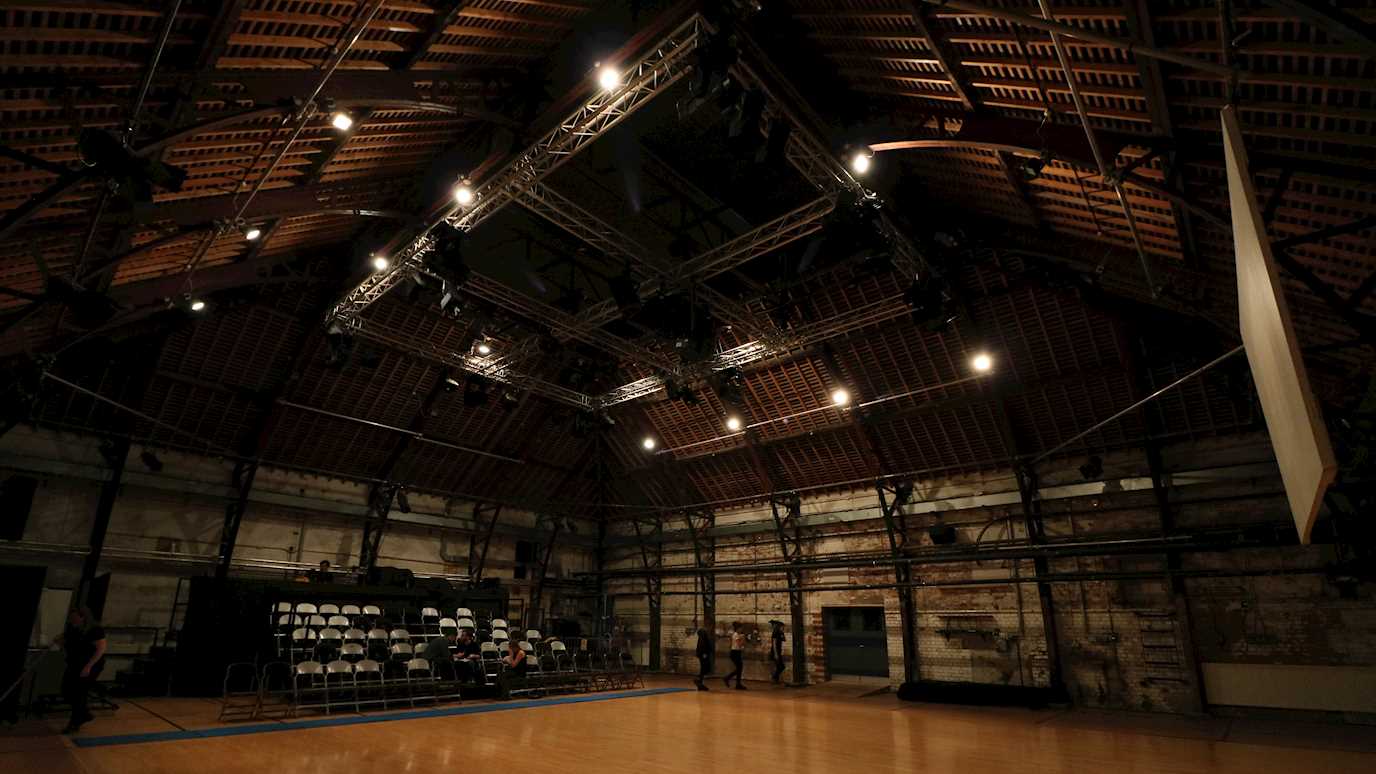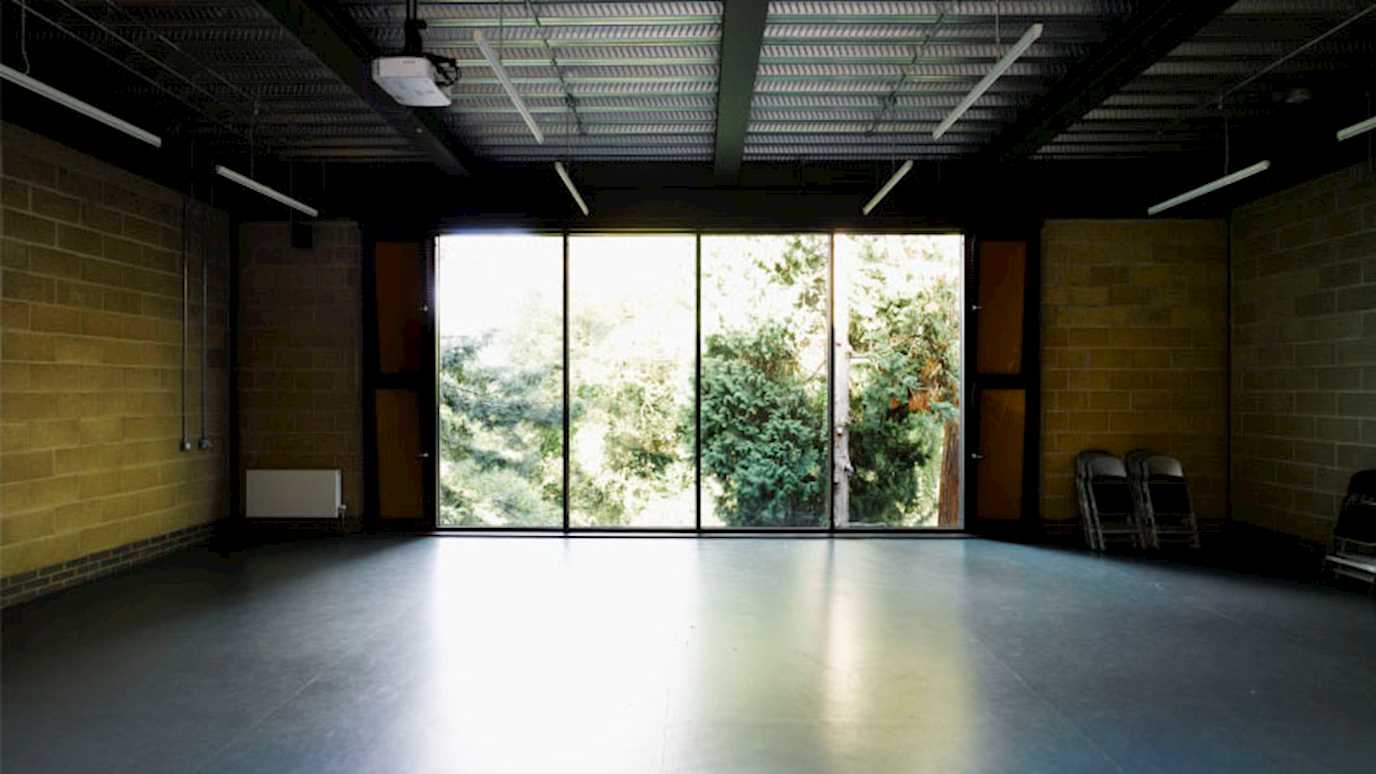The Handa Noh Stage is out of commission until an appropriate space is created to display it permanently.
The Handa Noh Stage, built according to traditional design, was a gift to our university in 1991 from the Japan Festival Committee and Mitsubishi Motors Corporation. The attractive exterior of the Noh studio and the vastly extended Noh auditorium were made possible in 1999 by a generous donation from Haruhisa Handa - a Japanese patron of the Arts.
Royal Holloway also has an excellent collection of beautifully illustrated Noh books, masks, fans, costumes and audio-visual material, gifts from the Japanese Noh Centre in Hosei University, Tokyo, as well as from the Great Britain Sasakawa and Daiwa Foundations.
Since 1991, Royal Holloway has hosted numerous Noh performances with the assistance of Professor Naohiko Umewaka - a distinguished Noh actor and the great grandson of the man who transmitted the Noh to Ernst Fenollosa, Ezra Pound and W.B. Yeats. Naohiko successfully completed his doctoral studies at Royal Holloway and through him we have held workshops, demonstrations and performances which served to make this art more accessible to western students.
As of 2014, Royal Holloway hosts the Noh Training Project UK (NTPUK), an annual intensive three-week workshop on Noh chant, movement and music. Led by Prof. Richard Emmert, a certified teacher in the Kita School of Noh, the workshop runs each summer.
For more information on the history and future of Noh at Royal Holloway, download our brochure / 日本語パンフレット
The Architecture of the Stage
The stage has several distinguishing features: the wood is unvarnished to remind us of the art's purity and sacred origin; there is a pine tree on the back panel which is both a representation of the sacred pine tree in the Kasuga shrine at Nara and the generic God-Tree which serves as a spirit conductor. Noh drama is a mediumistic art and most Noh plays feature restless ghosts who are compelled to return to earth to re-tell their stories in a sacred space. Such a space was originally marked by a tree and four clumps of bamboo at each corner. There are bamboo clumps on the right panel of the stage which is a reminder of the sanctity of the space.
Another distinguishing feature is the unusually long bridgeway which renders the stage asymmetrical. Not only is asymmetry a characteristic of Japanese art but it suggests imbalance and paradox which underpin the Noh art as well as Zen Buddhism - the religion of the samurai warriors which has shaped it.

A performance given by Professor Naohiko Umewaka.
Noh Theatre: The Form
Noh is a Japanese traditional performance art, which emerged in the 14th century. It is a unique form, startlingly poetic, lyrical and refined. It is also an intrinsically interdisciplinary art, drawing upon dance, chant, music, mask, and rich costumes. It was designated a form of ‘Intangible Cultural Heritage of Humanity’ by UNESCO in 2008.
Noh is renowned for its restrained aesthetic: all superfluous details are removed. In its place, the concentrated use of a number of richly decorated masks, costumes and props make Noh performances a rich visual spectacle.
Technique is vital to Noh. Professional actors will have trained for many years to make movements appear graceful, to give their voice a rich sound, and to understand their art from the inside out.
There are many Western practitioners who have been inspired by Noh’s distinctive aesthetic: W.B. Yeats, Bertolt Brecht, Eugene O’Neill, Benjamin Britten, Peter Brook and Arianne Mnouchkine are but a few.

The Handa Noh Stage























